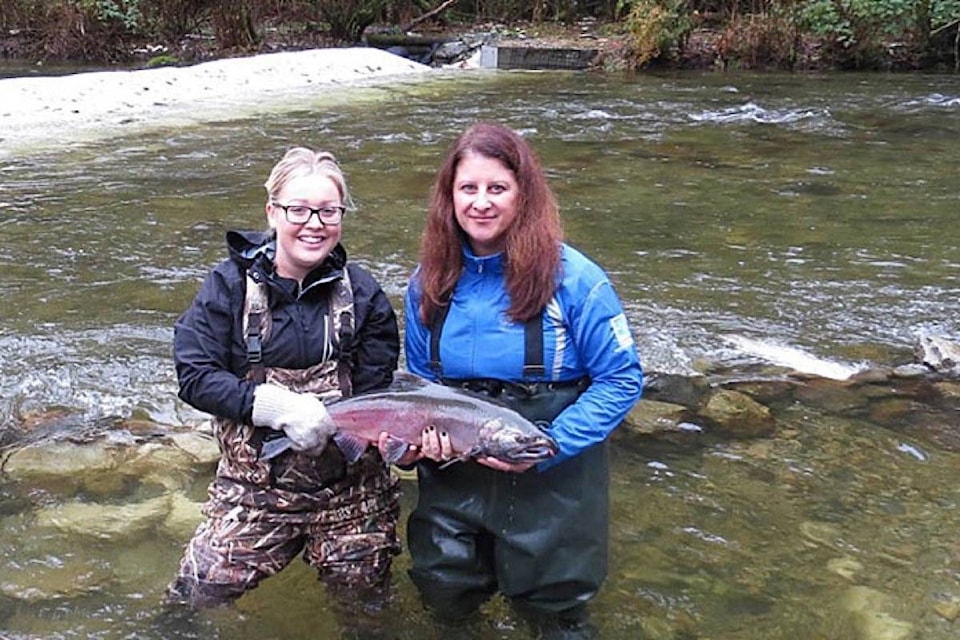While blueberries are baking in the fields, fish are playing it cool in local creeks.
Thanks to a cold winter, with tons of snow in the mountains above, and a wet spring, Maple Ridge’s streams are managing through the long, hot summer.
Environment Canada said that in July there was just three millimetres of rain at Pitt Meadows Regional Airport, compared to the average of 57 mm for the month. The drought has continued in August with just 6.4 mm, whereas the average is 68 mm.
“We really bought ourselves a lot of time with the heavy snow pack and cold, wet spring,” said Ross Davies with Kanaka Education and Environmental Partnership Society.
“It’s a typical late August. The water is quite low but we’re not seeing any critical temperatures.”
Davies says the water in Kanaka Creek is 20 C. That compares to a few years ago where water temperatures hit 25 C. Warmer water contains less oxygen making conditions more difficult for fish.
But had last winter been warm and dry, the fish would be in trouble. Davies said he’s not optimistic about this year’s return for chum or coho because the warm water in the Pacific two years ago.
Conditions are good in the South Alouette River as well, thanks to the regular flows of water discharged from B.C. Hydro’s Alouette reservoir. A sustained flow of water from near the bottom of the lake into the river, along with the heavy brush and trees along the banks, keeps the water running cool.
Sophie Smith, with the Alouette River Management Society, said the river temperature is about 19 C, compared to 2015 when it hit 22 C.
“Where we are it’s pretty shaded. The trees are doing their thing, keeping the temperatures lower. It’s warm for fish obviously, but I’ve seen much worse.”
A recent invertebrate study showed that all the little water bugs are doing OK during the heat wave.
Pink salmon are due back in the river in September, followed by coho and chum in October and November and chinook in January.
The efforts by the river society though to restore the sockeye run continues to struggle. This year, only three sockeye returned from Pacific Ocean to the base of the Alouette reservoir dam where they’re then put into a tank in a truck and driven up to the lake and released. Two of those died, so only one was able to be released back into the lake.
Those three were among the thousands of kokanee released over the Alouette dam into the river each spring, with the hope that the fish return and re-establish a sockeye run that was destroyed when the dam cut off access to the lake when it was built in 1927.
In 2010, more than 100 sockeye came back up the South Alouette.
The society wants B.C. Hydro to build a fishway around the 11-metre high dam to allow all species of salmon to re-connect with the lake.
